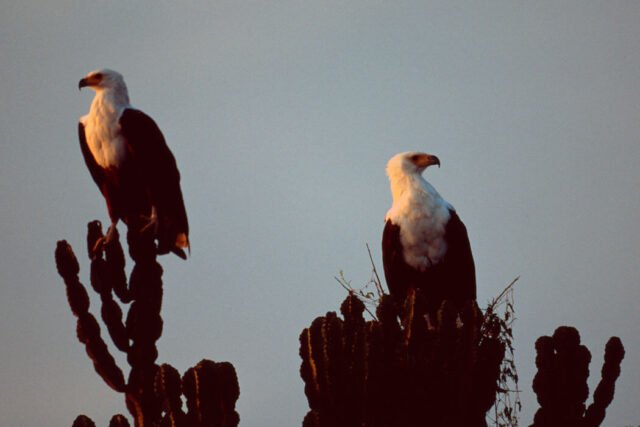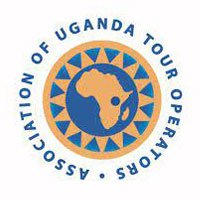When is the best time to visit Uganda for gorillas and other wildlife and cultural experiences? This is an important question for anyone who is interested in visiting the Pearl of Africa.
Uganda is known for the breathtaking landscapes, diverse wildlife and vibrant culture that guests can experience while visiting the country. Whether it is gorillas, elephants, lions, hippos, stunning mountains, the mighty river Nile and much more, Uganda has something for everyone and this is the reason behind its popularity as an important African travel destination.

Uganda is crossed by the equator and enjoys a good climate of warm and sunny days all year long, with stable temperatures that don’t change much.
This article is your guide to understanding the climate/seasons of Uganda and when it is the best time for you to visit Uganda, based on your choice of activities and personal preference.
Uganda’s Seasons
Uganda experiences two distinct dry seasons and two rainy seasons in a year. Here’s a closer look at each of the seasons entails and what it means for your Uganda safari plans and ambitions.
Dry Seasons
Uganda’s dry seasons take place from December to February and again from June to August. This period is characterized by sunshine, clear skies, and minimal rainfall.
Temperatures are generally pleasant, ranging from 22-24°C (72-75°F). This golden time is widely considered the peak tourist season for Uganda.
Ideal Safari Activities
The dry seasons offer prime conditions for gorilla trekking and chimpanzee tracking in Bwindi Impenetrable National Park and Kibale National Park, respectively.
With drier trails and clearer skies, wildlife viewing across Uganda’s diverse national parks like Queen Elizabeth National Park and Murchison Falls National Park becomes significantly easier. Animals tend to congregate around water sources during this time, making them easier to spot.
Shoulder Seasons
The shoulder seasons are transitional period that bridge the gap between distinct dry and wet seasons. This often happen in March, May and September as the seasons change merge into each other.
You can expect a mix of sunshine and occasional showers, with temperatures remaining comfortable.
Ideal Safari Activities
The shoulder seasons present a good opportunity for wildlife viewing, often with fewer crowds compared to the peak period of the dry seasons. Birdwatchers can also start spotting some early migrant birds during these months.
Shoulder seasons are always ideal for those who want to tour the wild but with fewer crowds.

Rainy Seasons
The rainy (wet) season in Uganda occurs from the months of March to May, and again from September to November. Uganda’s wet seasons bring lush greenery and a vibrant atmosphere.
You can expect frequent downpours, particularly in the afternoons, with temperatures remaining relatively stable. While some activities might be less ideal, the rainy season does have its own appeal.
Ideal Activities
The rainy seasons are ideal for spotting a wide variety of birds, including migratory species. Uganda is home to around 50% of all birds species found in Africa, and the lush vibrancy of the wet season makes it easy to see most – if not all of the 1000+ species.
Best time for Popular Activities
Now that you’re familiar with Uganda’s seasons, let’s put everything into proper context and explore the top tourist activities – and when the it is the best time to visit Uganda for the necessary activity.
Gorilla Trekking

Gorilla trekking – arguably Uganda’s most iconic wildlife experience, involves venturing into the rain forests to observe a family of mountain gorillas in their natural habitat.You hike through dense vegetation until you reach the gorillas, then spend 1 hour with them before leaving the forests.
Given the higher amounts of rain received in these mountainous rain forests, the dry season is ideals as it makes hiking trails easier to navigate. The specific climate in these areas means that it could rain at any time, with little warning – regardless of the season.
Gorilla trekking takes place in Bwindi Impenetrable National Park and Mgahinga Gorilla National Park.
Chimpanzee Tracking

Chimpanzees are the closest animal cousins to humans and we share more than 98% of DNA. In Kibale National park, you get to see these distant cousins deep in the forest where they live freely.
Kibale has the largest population of chimpanzees in the world, and combined with 12 other species of primates, it has earned the name “primate capital of the world”.
For chimpanzee tracking, you are guided into the forest in search of the chimps – which after finding them, you get to spend 1 hour observing and photographing – as they go about their day.
Similar to gorilla trekking, the dry seasons provide the best conditions for chimpanzee tracking through easier trails.
Wildlife Viewing

Most tourists who come to Uganda have wildlife viewing as part of their safari itinerary. Whether by boat or game drives, an adventure across Uganda’s savannas and national park bring you in close enough to observe hippos, elephants, lions, leopards, buffaloes, rhinos, zebras, giraffes and much more.
The dry season months are perfect for wildlife viewing as animals gather around water sources, making them easier to spot.
The shoulder seasons can also be rewarding as they offer a good balance between easy wildlife sightings and smaller crowds.
Birding

Uganda is the best birding destination in Africa and boasts an incredible diversity of bird life, with more than 1,000 species recorded.
Inasmuch as birding is great all year-round, the rainy seasons (March – May and September – November) attract a wider variety of migratory species, making them a haven for birdwatchers.
Some iconic birds you might encounter in Uganda include the Shoebill stork, the African green broadbill with its vibrant plumage, and the crowned crane – Uganda’s national bird.
Conclusion
With good all year weather, Uganda is one of those places where you can go all year round. The reason for looking into these seasons is to make certain of the experience you will have and the expectations to hold.
This guide give you a clear idea of what time could best work for you, and if you have any questions that are more specific, you can reach out to us and we’ll help you get clarity on your specific query.
Depending on your specific interests and wishes, we can make a safari package that is tailored to you and the time that works for you.








